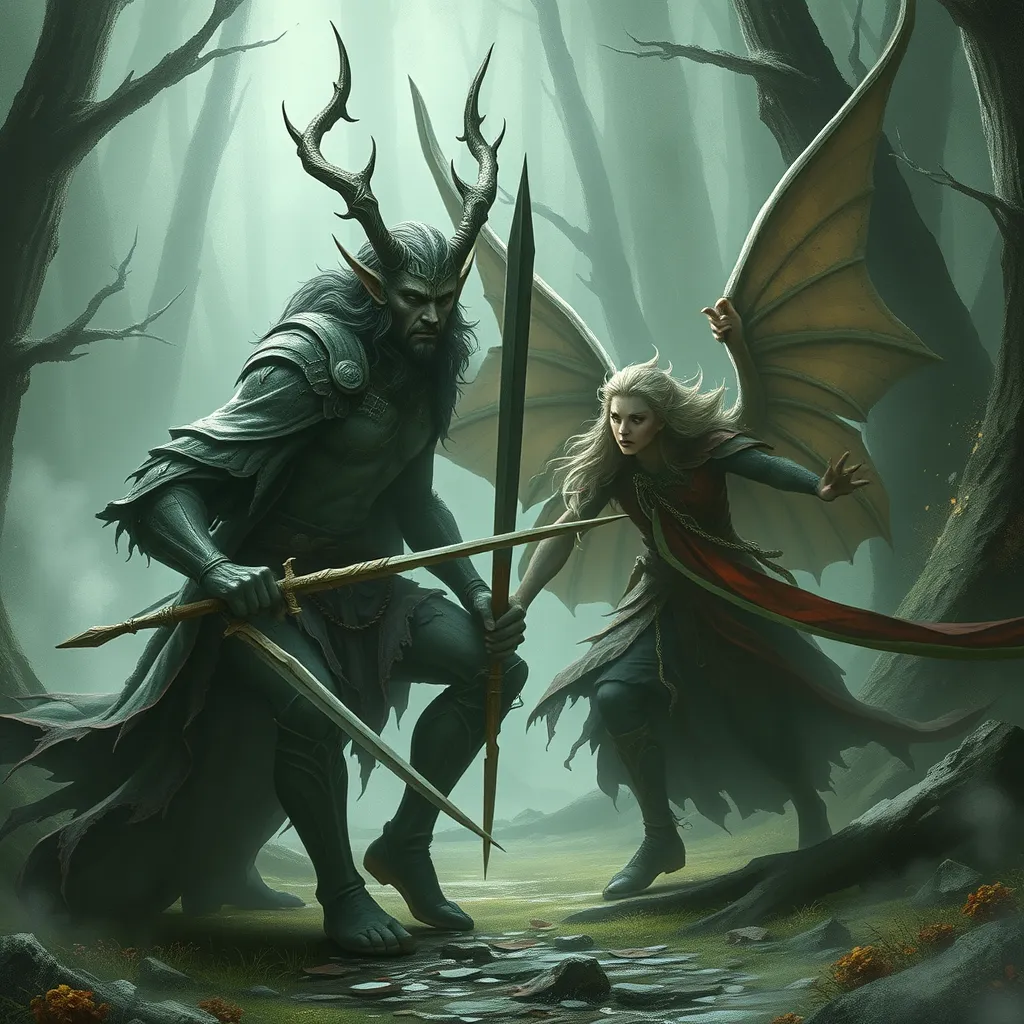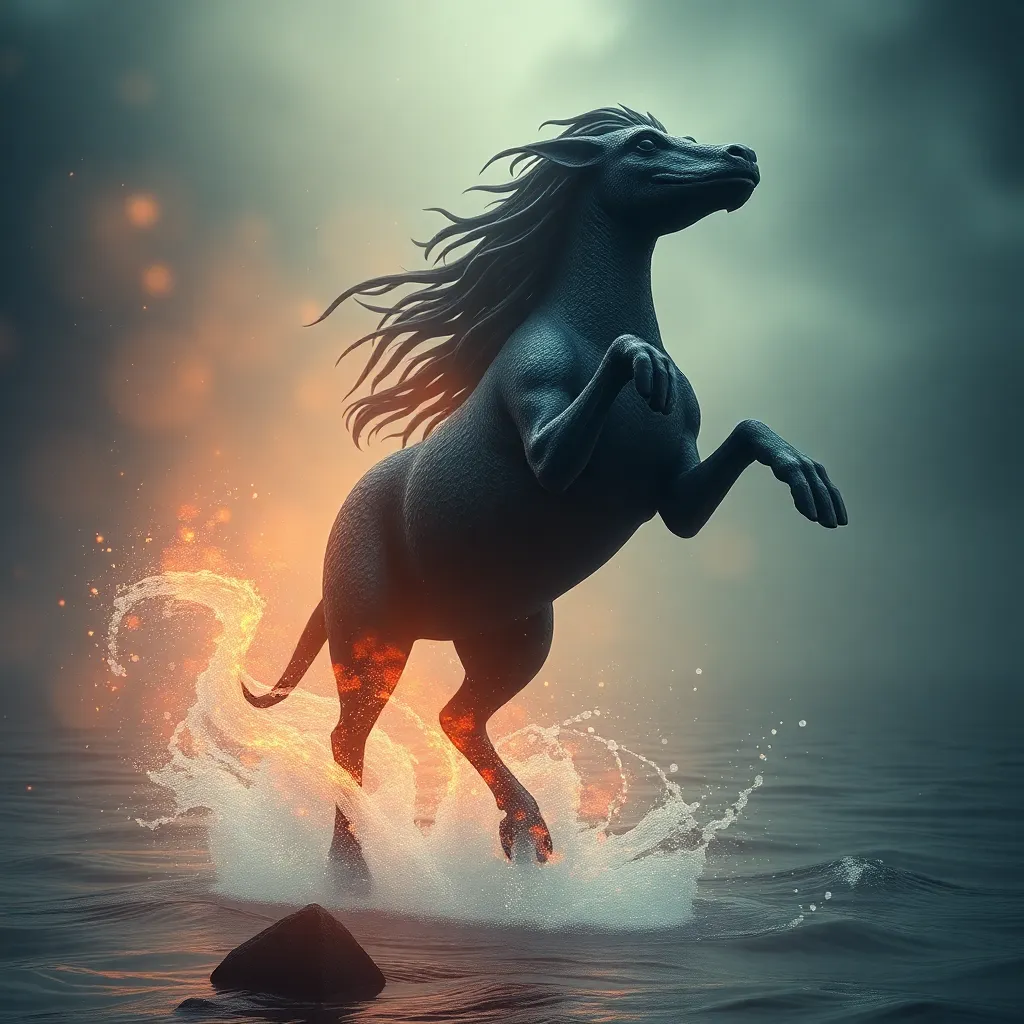The Elven Warring: Exploring the Battles, Alliances, and Conflicts of the Fae
I. Introduction to the Elven Warring
The Elven races, known for their ethereal beauty, wisdom, and connection to nature, hold a significant place in fantasy lore. From the regal High Elves with their intricate societies to the fierce and wild Wood Elves, each faction contributes to the tapestry of Elven culture and history. However, beneath their serene exterior lies a tumultuous past marked by conflict, alliances, and betrayal.
The concept of the Elven Warring encapsulates a series of conflicts that arose among these diverse races, often fueled by territorial disputes, ancient grudges, and the pursuit of power. Understanding this historical period is crucial for grasping the current dynamics of Elven societies and their enduring legacies.
II. Historical Background of Elven Conflicts
A. Ancient origins of Elven clans and their territories
The roots of Elven conflicts can be traced back to ancient times when various clans established their territories across enchanted forests, mystical mountains, and hidden glades. Each clan had its own customs, governance, and magical practices, leading to a rich but divided Elven world.
B. Key historical events that ignited the warring period
Several pivotal events marked the beginning of the Elven Warring:
- The Shattering of the Crystal: A powerful artifact that maintained peace among clans was destroyed, leading to a scramble for its shards.
- The Great Drought: A prolonged drought caused resource scarcity, heightening tensions among clans over water and fertile land.
- The Assassination of the High Queen: The mysterious death of a beloved monarch sparked suspicions and accusations, igniting old rivalries.
C. The role of magic and ancient prophecies in shaping conflicts
Magic, a fundamental aspect of Elven identity, played a critical role in these conflicts. Ancient prophecies foretold of great upheavals, often interpreted to justify wars or alliances. The wielding of powerful spells not only served as a weapon but also as a means of manipulation, leading to further distrust among the factions.
III. Major Battles and Their Impact
A. Overview of significant battles in Elven history
Throughout the Elven Warring, several battles became legendary, shaping the course of Elven history:
- The Battle of Silverwood: A decisive confrontation between the High Elves and the Dark Elves that resulted in significant territorial changes.
- The Siege of Eldergrove: A fierce battle fought over a sacred grove, marking the rise of the Wood Elves as formidable warriors.
- The Twilight Engagement: An ambush that turned the tides in favor of the Night Elves, showcasing guerrilla tactics and cunning strategies.
B. Tactics and strategies employed by different factions
Each faction employed unique tactics based on their strengths:
- High Elves: Known for their disciplined formations and mastery of powerful spells, they relied on traditional warfare techniques.
- Wood Elves: Utilized their intimate knowledge of the forest, employing ambushes and hit-and-run tactics to outmaneuver larger armies.
- Dark Elves: Engaged in subterfuge and psychological warfare, often striking from the shadows to instill fear in their enemies.
C. Consequences of these battles on Elven society and the world at large
The consequences of these battles were profound, leading to:
- A shift in power dynamics among the clans, with some factions gaining prominence while others faded into obscurity.
- Destruction of sacred lands, leading to a loss of cultural heritage and magical resources.
- The emergence of new alliances and enmities that would define future generations.
IV. Alliances and Betrayals
A. Exploration of key alliances formed during the Elven Warring
In the midst of chaos, various alliances were forged:
- The Pact of the Silver Leaves: An agreement between the Wood Elves and High Elves to protect their forests from encroaching foes.
- The Brotherhood of Shadows: A dubious alliance among the Dark Elves and rogue factions, focused on undermining their common enemies.
B. Notable betrayals that altered the course of conflicts
Betrayals played a critical role in the Elven Warring, such as:
- The Betrayal at Dawn: A High Elf lord switched allegiances to the Dark Elves, providing them with crucial intelligence.
- The Fall of the Crystal Keep: A trusted advisor to the Wood Elves turned traitor, leading to the loss of a key stronghold.
C. The impact of diplomacy and negotiation on war outcomes
While warfare dominated the era, diplomacy also played a vital role. Negotiations often led to temporary ceasefires, allowing factions to regroup and reassess their strategies. The ability to negotiate peace, however fragile, showcased the complexity of Elven interactions.
V. The Role of Myth and Legend in Elven Warfare
A. Influence of myths and legends on the perception of battles
Myths and legends have a profound impact on how Elven societies perceive their history. Tales of valor, treachery, and sacrifice shape cultural narratives and provide moral lessons for future generations.
B. Famous Elven heroes and their stories
Throughout the Elven Warring, numerous heroes emerged, their stories immortalized in songs and tales:
- Lyra the Brave: A legendary warrior who united clans against a common foe, known for her unmatched archery skills.
- Thalion the Wise: A sage who foresaw the conflicts and sought to mediate peace, often revered for his wisdom.
C. How folklore shapes cultural memory of the Elven Warring
Folklore serves as a vessel of cultural memory, ensuring that the lessons learned during the Elven Warring are passed down through generations. Songs, stories, and art continue to reflect the struggles and triumphs of this tumultuous era.
VI. The Evolution of Elven Societies Post-War
A. Changes in political structures and power dynamics after the wars
The aftermath of the Elven Warring brought significant changes to political structures, with new factions emerging and old ones disbanding. The once rigid hierarchies became more fluid, allowing for new leaders to rise based on merit and capability.
B. The emergence of new factions and ideologies among the Fae
In the wake of conflict, new factions arose, each with distinct ideologies:
- The Order of the Verdant Leaf: Advocating for harmony with nature and the preservation of sacred lands.
- The Coalition of the Night: Focused on embracing the darker aspects of Elven magic and power.
C. Lasting effects of war on Elven culture and identity
The scars of war deeply influenced Elven culture, leading to:
- A newfound appreciation for peace and unity among clans.
- Artistic expressions that reflect both the beauty and tragedy of their history.
- Ongoing dialogues about the nature of power and responsibility within their societies.
VII. Modern Perspectives on the Elven Warring
A. How contemporary Elven societies view their historical conflicts
Today, many Elven societies reflect on their historical conflicts with a sense of caution. They recognize the importance of unity, as the scars of the past remind them of the fragility of peace.
B. The role of storytelling and arts in preserving war narratives
Storytelling remains a vital aspect of Elven culture, with artists and bards dedicated to preserving the narratives of the Elven Warring. Through various mediums, they explore themes of conflict, alliance, and reconciliation.
C. Lessons learned from the Elven Warring that apply to modern conflicts
The history of the Elven Warring offers valuable lessons for contemporary societies:
- The necessity of dialogue and understanding in resolving conflicts.
- The importance of recognizing the shared humanity among diverse groups.
- The dangers of unchecked ambition and the pursuit of power at the expense of unity.
VIII. Conclusion: The Enduring Legacy of the El

![[FULL] THE FAE & THE FALLEN | Paranormal Romance | AUDIOBOOK by Brittni Chenelle](https://i.ytimg.com/vi/m-axf7RXADk/hqdefault.jpg)


